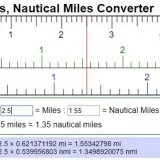Ever wondered about days in year? I mean, we all know there’s like 365 or 366 floating around, but honestly, it’s kinda more fun than it sounds. I remember as a kid, I once tried counting the days on a calendar I found under my bed. Don’t ask why—it was summer, and I had nothing better to do. I lost track around… day 47. Still feels like a lifetime ago.
Anyway, let’s dive into this weirdly exciting topic.
What Are Days in Year, Anyway?
Alright, so when people ask “how many days in year,” they’re usually just trying to figure out why our calendars sometimes go a little haywire.
Here’s the deal in plain language:
- A “regular” year has 365 days. Yep, that’s your standard, boring calendar.
- Every four years, we add an extra day to sync things up with the Earth’s actual orbit—yep, the mysterious leap year. That makes 366 days.
Honestly, it feels kind of wild that humans had to figure out all this just to keep birthdays and holidays from drifting around. Imagine if your birthday slowly slid into winter over centuries. That’d be tragic.
Why 365 Days?
The Earth takes roughly 365.2422 days to orbit the Sun. Sounds fancy, right? But if we only counted 365, we’d slowly drift off schedule.
- Think of it like a video game glitch. You’re sprinting through levels, but your timer is off by a few seconds each round. Multiply that by years, and suddenly New Year’s Eve is in July.
Back when I tried explaining this to my younger cousin, I said, “It’s like the Earth has a slightly messy sleep schedule.” He stared at me for a solid 2 minutes before saying, “Cool?”
Leap Year Magic
Ah yes, the infamous leap year. That extra day in February, sneaking in like a surprise guest at a party.
- Leap years happen roughly every 4 years.
- The rule is simple-ish: divisible by 4? You get a leap year. Divisible by 100? Not a leap year, unless divisible by 400.
Yeah, I know, sounds like your math teacher designed a torture device. Straight up wild.
- Example: 2000 was a leap year (divisible by 400). 1900 wasn’t. I mean, who even remembers 1900? I barely remember last Tuesday.
The extra day keeps our calendar aligned with the Earth’s orbit. Otherwise, eventually, June would be snowing in some parts of the world. Can you imagine that? My brain can’t handle it.
Fun Facts About Leap Years
- The tradition of leap day dates back to Julius Caesar. I like imagining Caesar in a toga, shrugging and saying, “We need more February days. Why not?”
- Some cultures believe being born on February 29 is lucky. Others think it’s unlucky. I once met a guy who only celebrates birthdays every 4 years. He seemed… kinda bitter.
Honestly, adding a day seems small, but it actually prevents chaos. Imagine trying to plan your vacation 400 years from now without it. Yikes.
Breaking Down Days in Year
Let’s get a little more personal here.
- Regular year = 365 days
- Leap year = 366 days
I remember writing this down once on sticky notes all over my wall, trying to “visualize the year.” My mom thought I was turning into a calendar stalker. Possibly true.
You can also think of it like this:
- 365 days = 52 weeks + 1 day
- 366 days = 52 weeks + 2 days
Yeah, feels kinda trivial, but it actually matters when you try to figure out what day your birthday lands on. One day off, and suddenly Monday birthday blues hit you hard.
Why Does a Year Have This Specific Length?
So, Earth takes about 365.2422 days to orbit the Sun. That 0.2422 is like the universe’s sneaky little joke.
- Without a leap year, calendars would slowly drift.
- Over 100 years, we’d lose about 24 days. Imagine Christmas in January. My childhood self would have been heartbroken.
It’s kinda neat when you think about it—nature is just slightly imperfect. Reminds me of that scene from House of Leaves, spooky stuff, where nothing lines up perfectly.
Counting Days in Months
Here’s a little refresher:
- January – 31 days
- February – 28 or 29
- March – 31
- April – 30
- May – 31
- June – 30
- July – 31
- August – 31
- September – 30
- October – 31
- November – 30
- December – 31
I always forget why some months have 30 and others 31. My grandpa told me a story about an ancient Roman king stealing a day from February to make August longer. Sounds legit. Felt kinda weird believing it, but whatever.
Oddities and Historical Tidbits
- Leap year adjustments go back to 45 BC. That’s over 2000 years! Makes me feel tiny.
- Ancient Egyptians also had a rough calendar, just 360 days. They clearly didn’t have Netflix to stretch the year, right?
Real-Life Impact of Days in Year
Honestly, knowing about days in year isn’t just trivia. It hits real life in weird ways.
- Planning vacations
- Birthdays and anniversaries
- Accounting and taxes (ugh, boring, but true)
I once missed a friend’s birthday because I miscounted days across February and—oops—yeah, still feel guilty.
Leap Day Personal Stories
- Some people propose on Feb 29. Some call it unlucky.
- I once almost scheduled a dentist appointment on Feb 29. Didn’t realize until the calendar warned me. Felt kinda dumb.
Misconceptions About Days in Year
Let’s bust a few myths:
- Myth: Every year divisible by 4 is leap.
Truth: Not always—century years have rules. - Myth: Leap day is unlucky.
Truth: Totally subjective. I personally think it’s a bonus day to binge snacks. - Myth: February always has 28.
Truth: Leap year, buddy. That sneaky 29th day pops in.
I like to think of these as nature’s way of keeping us on our toes. Reminds me of that time I slipped on ice in February. I swear the calendar was laughing.
Cultural Quirks Around Days in Year
- Some cultures have festivals on February 29.
- Some people born on leap day celebrate on Feb 28 or March 1.
- In some European countries, there are old traditions where women can propose to men on leap day. Wild, right?
Calculating Days in Year Yourself
Honestly, it’s easier than it seems.
- Start with 365.
- Add 1 if it’s divisible by 4 (and follow the 100/400 rule).
- Celebrate your newfound knowledge!
I tried explaining this to my niece once, using jellybeans. Didn’t work—she ate them. Wrote this paragraph by hand. Then spilled coffee on it. Classic.
Why It Feels Important
Knowing about days in year helps you make sense of your schedule, birthdays, work deadlines, and honestly, life itself. It’s one of those facts that sneaks into every part of reality, whether you notice it or not.
- Your yearly planner
- School schedules
- Taxes, bills, birthdays
Fun Math But Totally Optional
If you ever feel like impressing someone at a party (no kidding), you can drop this:
- 365 × 24 = 8760 hours in a regular year
- 366 × 24 = 8784 hours in a leap year
That’s a lot of hours to mess things up if you forget the extra day.
Final Thoughts on Days in Year
Honestly, I still find days in year kinda magical. A tiny 0.2422 day fraction sneaks into our lives, we add a day every 4 years, and suddenly the world stays in rhythm.
It feels like we’re cheating nature a little, but in a charming way. A calendar that doesn’t slip is like a friend who never forgets your birthday.
So yeah, whether you’re counting for fun, trivia, or just trying not to miss your dentist appointment, knowing the ins and outs of days in year makes life slightly less chaotic. And maybe a little more charming.
- Leap years? Sneaky but necessary.
- Months? Random but historic.
- Calendars? Slightly imperfect, just like us.
Honestly, I still laugh when I think about my childhood sticky-note calendar. Life’s funny that way, right?








